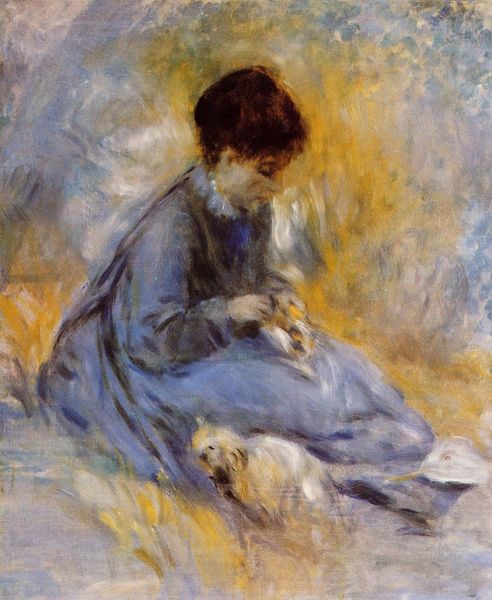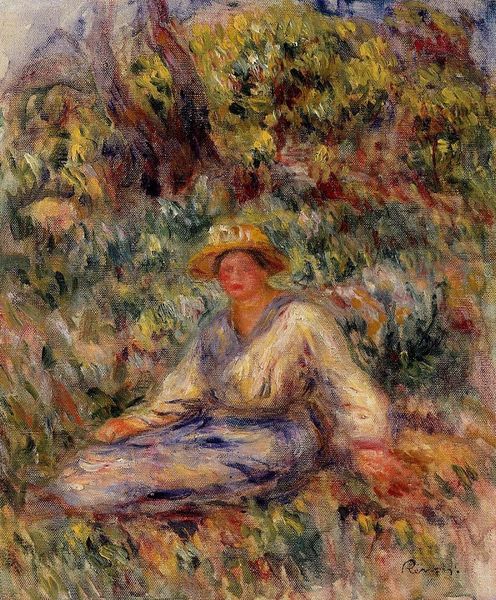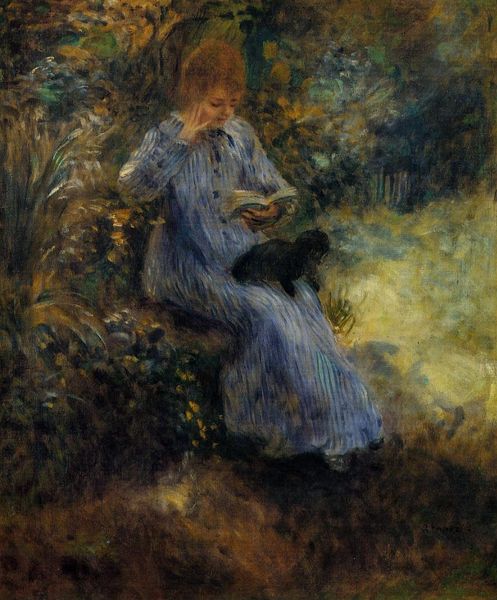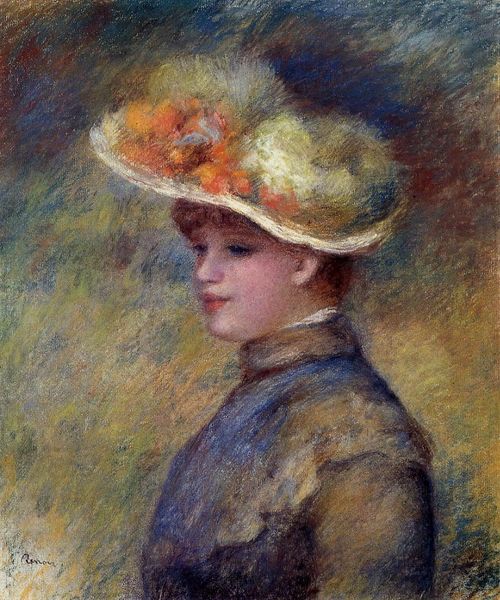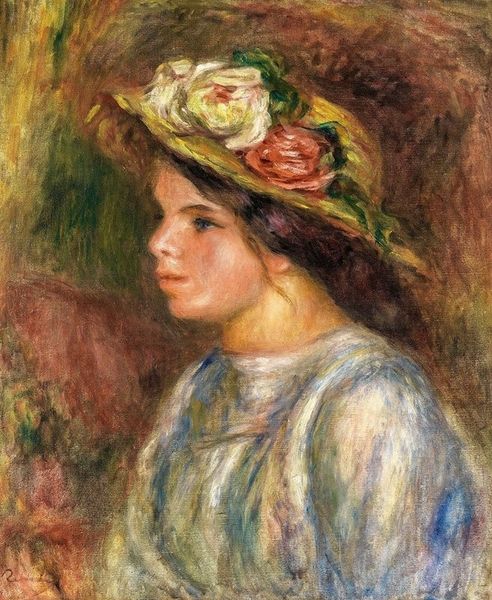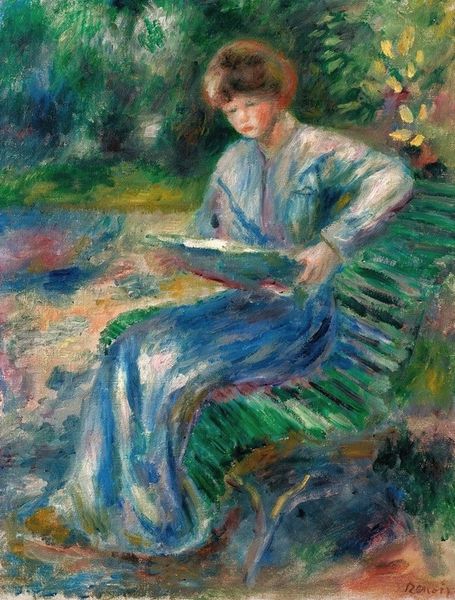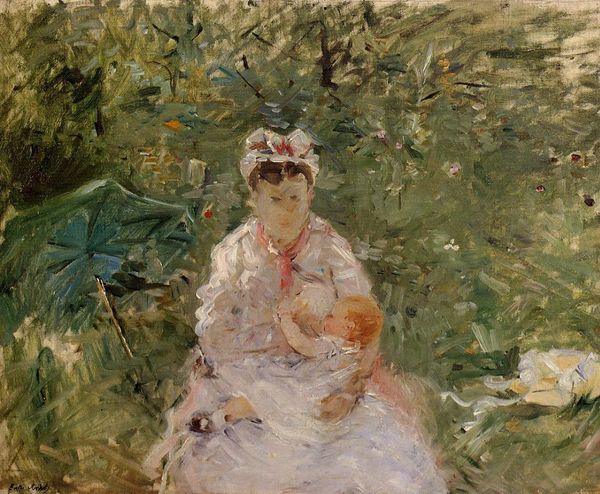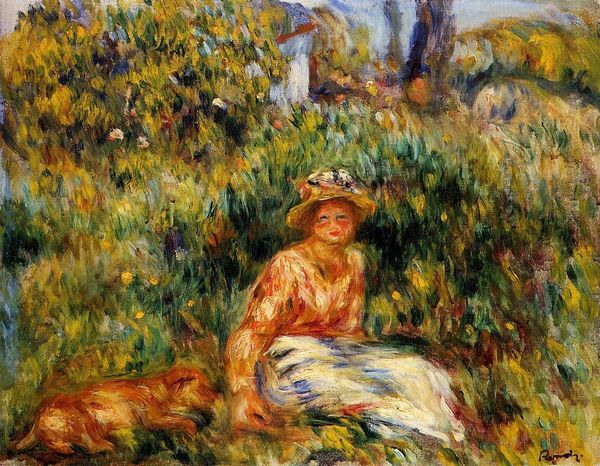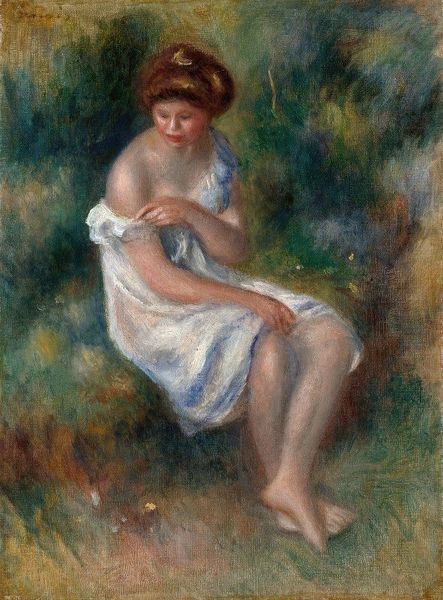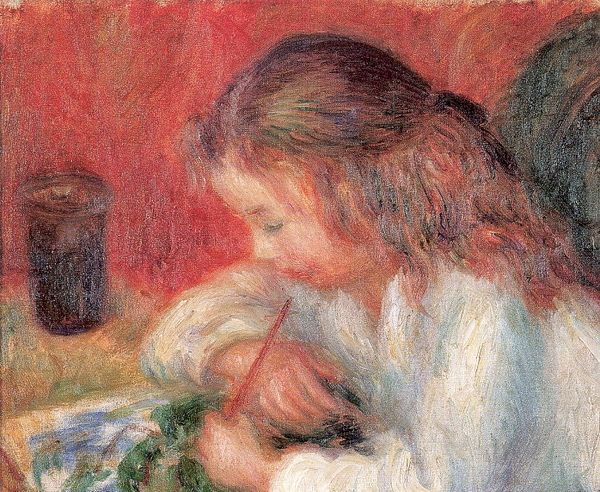
Copyright: Public Domain: Artvee
Curator: Immediately, the texture strikes me – it feels heavy, almost sculptural, like Renoir sculpted with his brushstrokes in "Girl Seated in a Landscape," circa 1914. Editor: The averted gaze and closed-off posture speak to me more powerfully. It seems Renoir situates her at the intersection of landscape and identity, possibly commenting on the limited roles afforded to women within these spaces during the early 20th century. Curator: You read so much narrative into it! I see mostly oil paint thickly layered onto the canvas. Look at how the blues of her dress seem to bleed into the surrounding foliage. It's almost as if the material world is more significant than the girl herself. What about the facture and touch here? Editor: I can appreciate the materiality, but the gesture of hiding or perhaps daydreaming resonates deeply, placing the female subject, perhaps against her will, outside of direct engagement with the dominant male gaze of the time. She appears in conflict, embedded and yet isolated within the scene, her hands clasped, a sign of restraint or even internal conflict. How do you see it as an object? Curator: As an object, I'm fascinated by the production, its visible labor. You see those broken strokes of pigment? He builds up form not through careful modelling but through pure materiality. The landscape seems secondary – just a collection of strokes. The means of representation feel honest and straightforward. How can we address his patron at this period in his career? Editor: While he renders her form with clear skill, he denies us access to her thoughts. Her isolation feels emblematic of the constraints placed on women in that era, even within ostensibly idyllic settings. Are we idealizing her, by not making her interact more closely? Curator: You're arguing that this picture participates in her social imprisonment by re-inscribing isolation. Interesting. However, look how she nearly merges into the scene; his method also proposes connection, almost dissolution, back into the natural world as pigment. Is that dissolution a choice? Editor: Well, in light of that—a potent connection to place is a potential challenge to patriarchy if it is rooted in a connection with other like-minded female allies and companions! Curator: A revolutionary way of interpreting Impressionism. I'm grateful for your insights on the way the girl's portrayal is constructed. Editor: And I must recognize your dedication to close visual and physical analysis!
Comments
No comments
Be the first to comment and join the conversation on the ultimate creative platform.

